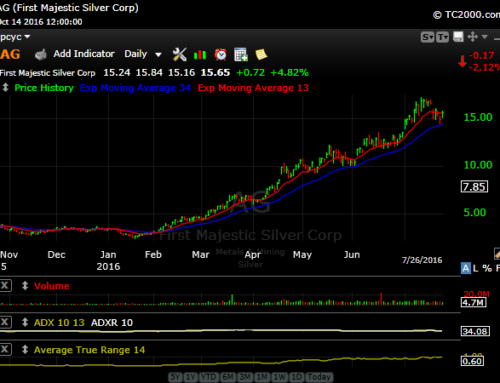Economic Picture
The biggest piece of economic news out this week was the January employment report, which indicated 200,000 new jobs were created in January, while the unemployment rate held steady at 4.1%. Most newsworthy though was that average hourly earnings were up 3% year over year, the strongest increase since the Great Recession.
This helped to push bond yields up even further and the yield on 10 Year Treasury Notes closed the week at 2.852%, the highest since 2014. For the week, the 10 Year Note yield rose by over 20 basis points.
Treasury yields were already climbing higher due to a variety of reports suggesting a very strong economy is at hand. On Wednesday, ADP announced that 234,000 private sector jobs were created, and I would note this report continues to suggest more strength in the labor market than the official government figures.
Additionally, consumer sentiment figures for the end of 2017 came in quite high.
Lastly, the Atlanta Fed raised its 1st Quarter GDP forecast to +5.4%. That would be the highest reading since 2014, but it would be the first time in years that such a high reading followed three quarters that averaged nearly 3%. That 2014 reading followed a negative quarterly reading.
These strong economic reports are now putting a little fear into the bond market that higher inflation will soon follow. These prospects are certainly possible as evidenced by strength in certain areas of the commodity markets, particularly the energy sector.
As a result of these higher inflation expectations and higher bond yields, the stock market experienced its biggest weekly sell-off since late 2015, when the market was in the middle of a stealth bear market (stealth because some averages such as the Transports and small caps experienced greater than 20% declines even the S&P 500 and Dow Industrials did not).
Political Climate
This was obviously a significant week for the political scene in DC. All week long, the media was waiting for the release of the Nunes FISA memo that alleges FISA surveillance abuses by the FBI and DOJ.
The reaction was as expected. Trump supporters suggest there is now proof of a coordinated effort first to keep Trump from winning the 2016 election, and since then, to undermine his presidency. Anti-Trump Republicans and Democrats mostly cry foul, suggesting the memo is biased.
One thing is sure…the memo has been causing quite a stir in Washington, and is only adding to the polarization. This may make it difficult first to come to another agreement on a short term continuing resolution for the budget, and to find reform immigration, which is the next big thing on DC’s agenda.
If the government shuts down again, that will likely be another negative for the market, depending upon how long it lasts.
If there is no agreement on immigration reform, I don’t see it being a big negative, since we haven’t had any sort of major legislation on immigration in years.
The next major shoe to drop in the ongoing investigations involving Trump/Russia/FBI/DOJ, etc. is the Inspector General’s report for the FBI and DOJ, due out in the next few weeks.
There is some speculation that FBI Deputy Director McCabe resigned last week as a result of Director Wray’s reading of some portions of the IG’s report, and not as a result of the Nunes memo.
In any event, both sides will continue their partisan rancor for the foreseeable future until the evidence becomes overwhelming in one direction or another. Until this week though, the cloud over the administration has not had a negative impact on the market. However, I do believe that the build-up and release of the Nunes memo exacerbated the market’s decline on Friday.
Current Technical Picture
Stock market losses for the week:
S&P 500: -3.85%
Dow Industrials: -4.12%
Dow Transports: -3.94%
Russell 2000: -3.78%
Nasdaq Composite: -3.53%
Nasdaq 100: -3.74%
It is pretty interesting to see how uniform the losses were among the major averages. This is what we call an “orderly” sell-off.
Quite frankly, the sell-off was overdue, as the market had gotten quite extended to the upside. All of the averages closed below their 20 day moving averages and the Russell 2000 and Dow Transports closed below their 50 day moving averages (I use exponential moving averages to give more weight to the more recent data).
I would expect some follow through selling in the early part of next week, followed by some consolidation, before the market tries to re-test the recent highs.
When that re-test occurs, however, there will likely be some significant divergences in place. It will then be key for the market to continue its strength, or consolidate at those higher levels so the divergences can take care of themselves.
Most of my attention will be focused on how the Dow Transports and Russell 2000 perform during the re-test of the highs, since they have been lagging.
At this point, we’ve already got some divergence between the S&P 500 and the new highs and new lows indicators. There may also be a problem developing with the Advance-Decline line.
On the New Highs indicator on the chart, note the trend line connecting the two latest peaks. The market also made a significant number of new lows on Friday.
If these divergences remain in play as the market tests the recent highs, we will be in for a longer lasting correction. However, I believe that correction will be within the context of an ongoing bull market trend in which the first major leg will have just been completed.






Leave A Comment